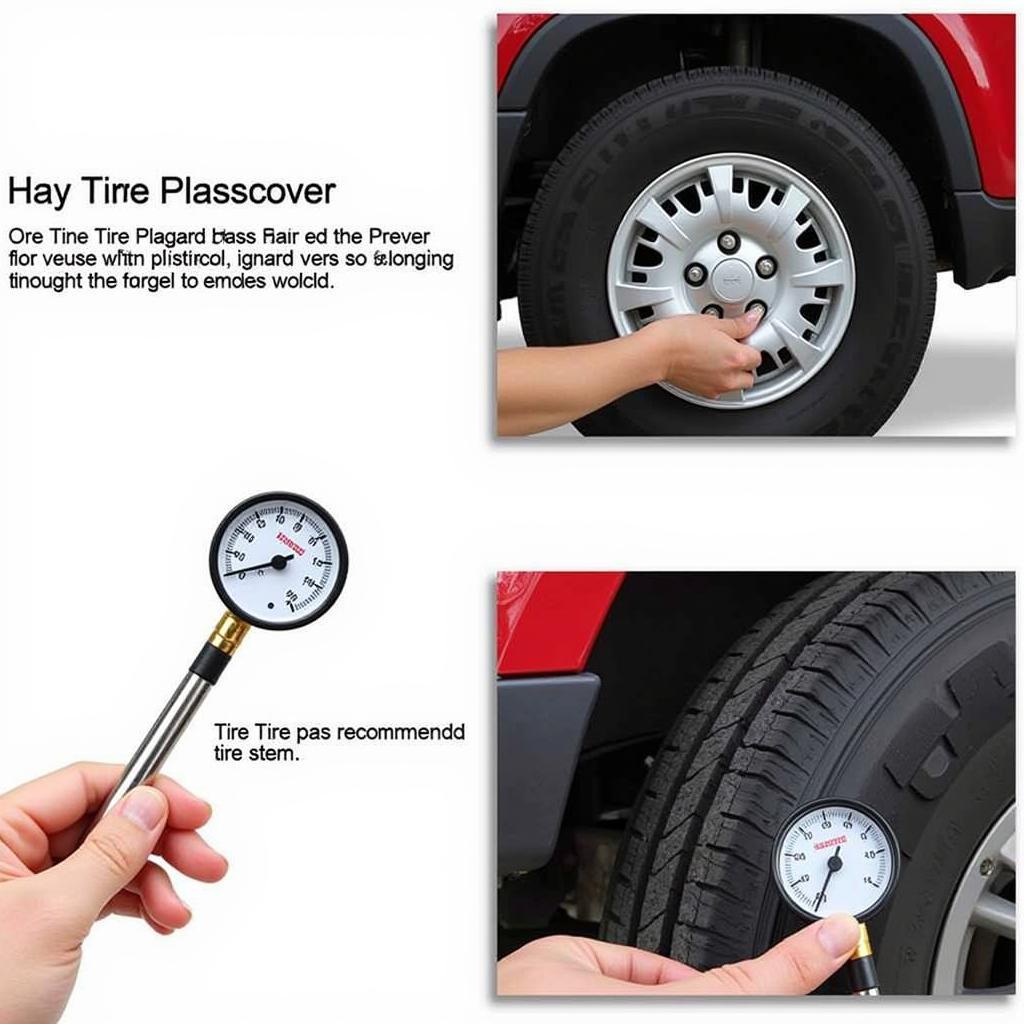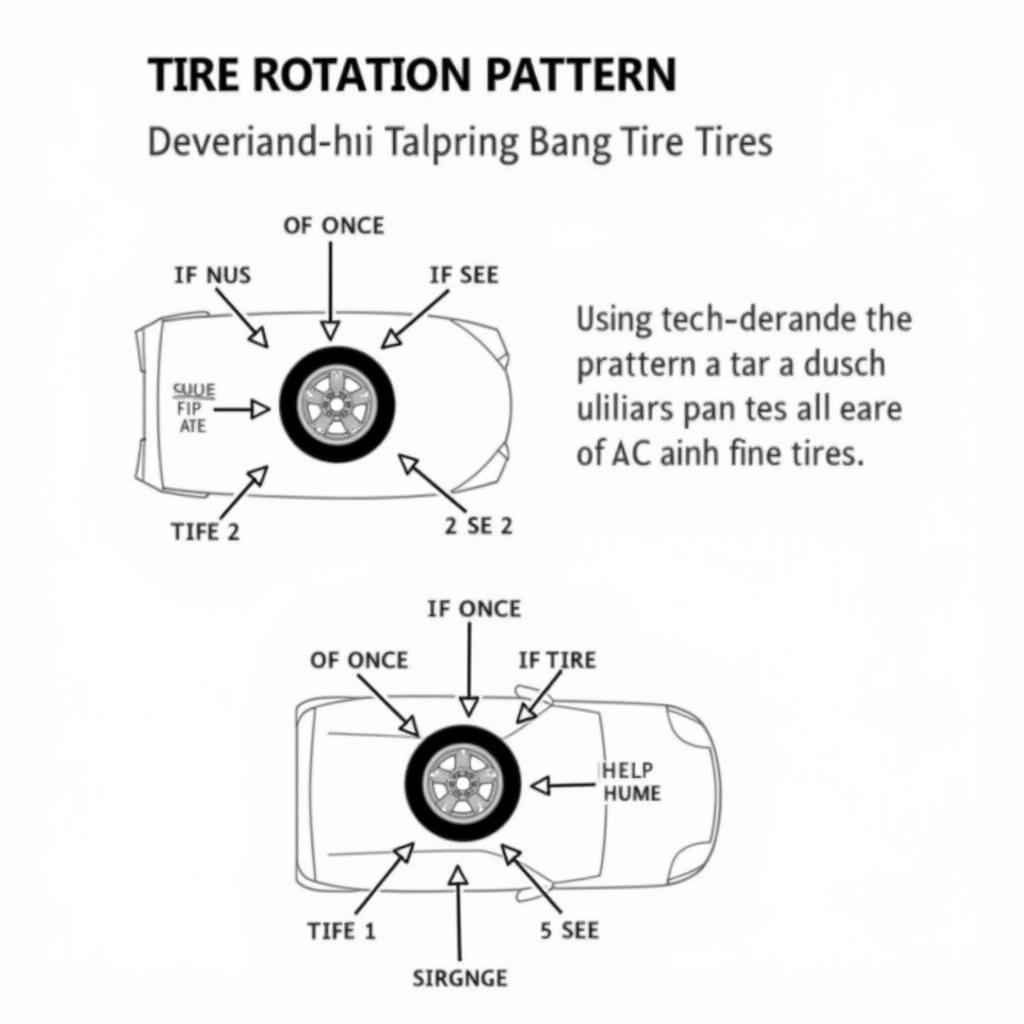Cupping tires, also known as scalloped tires, is a common tire wear pattern characterized by uneven wear across the tread, creating a cup-shaped or scalloped appearance. This issue can significantly impact your vehicle’s handling, ride comfort, and tire lifespan. Understanding How To Fix Cupping Tires involves addressing the underlying causes and implementing preventative measures.
Understanding Cupping Tires: Causes and Effects
Cupping tires is typically caused by suspension issues, improper inflation, or a combination of both. Worn shocks or struts are often the primary culprit. When your suspension components are worn, they can’t effectively control the tire’s movement, leading to bouncing and uneven contact with the road. This bouncing creates the characteristic cupping pattern.
Improper tire inflation can also contribute to cupping. Underinflated tires flex excessively, leading to uneven wear on the outer edges. Overinflated tires, on the other hand, wear out the center of the tread more quickly. While improper inflation alone rarely causes severe cupping, it can exacerbate the problem when combined with suspension issues.
The effects of cupping tires are noticeable. You might experience vibrations in the steering wheel, a bumpy ride, and increased road noise. Ignoring cupped tires can lead to premature tire failure and compromise your vehicle’s safety.
Diagnosing and Fixing Cupped Tires
Addressing cupped tires requires a systematic approach. First, inspect your tires for the telltale scalloped pattern. Run your hand across the tread; if you feel high and low spots, you likely have cupping.
Next, check your tire pressure. Ensure your tires are inflated to the recommended pressure listed in your vehicle’s owner’s manual or on the tire placard (usually located on the driver’s side doorjamb).  Kiểm tra áp suất lốp bằng đồng hồ đo
Kiểm tra áp suất lốp bằng đồng hồ đo
If your tire pressure is correct, the next step is to inspect your suspension. Look for signs of wear and tear on your shocks and struts, such as leaks or excessive bouncing when you push down on the corners of your vehicle.
Fixing cupped tires usually involves replacing the worn suspension components. This might include shocks, struts, control arms, or other related parts. It’s crucial to have a qualified mechanic diagnose and repair your suspension to ensure proper alignment and function. After replacing the faulty components, you’ll likely need a wheel alignment to ensure your tires wear evenly.
“Regular maintenance is key to preventing many tire problems, including cupping,” says John Smith, Lead Mechanic at Automotive Experts Inc. “Having your suspension inspected regularly can identify issues early on, preventing more extensive and costly repairs down the line.”
Preventing Cupping Tires
Preventing cupping tires is easier than fixing them. Regularly checking your tire pressure and having your suspension inspected at least once a year can significantly reduce the risk of cupping. Rotating your tires according to your vehicle’s recommended schedule also helps to promote even wear.
“Don’t underestimate the importance of tire rotations,” adds Jane Doe, Certified Tire Technician at Tire Town. “Rotating your tires helps distribute wear evenly, extending the life of your tires and preventing uneven wear patterns like cupping.”  Sơ đồ xoay vòng lốp xe
Sơ đồ xoay vòng lốp xe
Conclusion
Cupping tires is a preventable problem that can be addressed with proper maintenance and timely repairs. By understanding the causes, effects, and solutions for cupping tires, you can keep your vehicle running smoothly, safely, and efficiently. Regular tire pressure checks and suspension inspections are essential for preventing cupping and ensuring optimal tire performance. Don’t delay addressing cupping tires, as ignoring the problem can lead to more serious issues and compromise your safety.
FAQ
- What causes cupping on tires? Cupping is typically caused by worn suspension components, improper tire inflation, or a combination of both.
- How can I tell if my tires are cupped? Run your hand across the tread. If you feel high and low spots, resembling a scalloped pattern, your tires are likely cupped.
- Can I fix cupped tires without replacing them? If the cupping is minor, tire rotation might help even out the wear. However, if the cupping is severe, tire replacement is likely necessary.
- How can I prevent tire cupping? Regular tire pressure checks, annual suspension inspections, and proper tire rotations are essential for preventing cupping.
- How much does it cost to fix cupping tires? The cost depends on the extent of the damage and the necessary repairs. It could range from a simple tire rotation to replacing multiple suspension components.
- Can cupped tires be dangerous? Yes, cupped tires can compromise your vehicle’s handling and stability, increasing the risk of accidents.
- How often should I rotate my tires? Consult your vehicle’s owner’s manual for the recommended tire rotation schedule.
Gợi ý các câu hỏi khác, bài viết khác có trong web.
- Làm thế nào để kiểm tra độ mòn của lốp xe?
- Áp suất lốp xe ảnh hưởng đến hiệu suất nhiên liệu như thế nào?
- Khi nào nên thay lốp xe?
